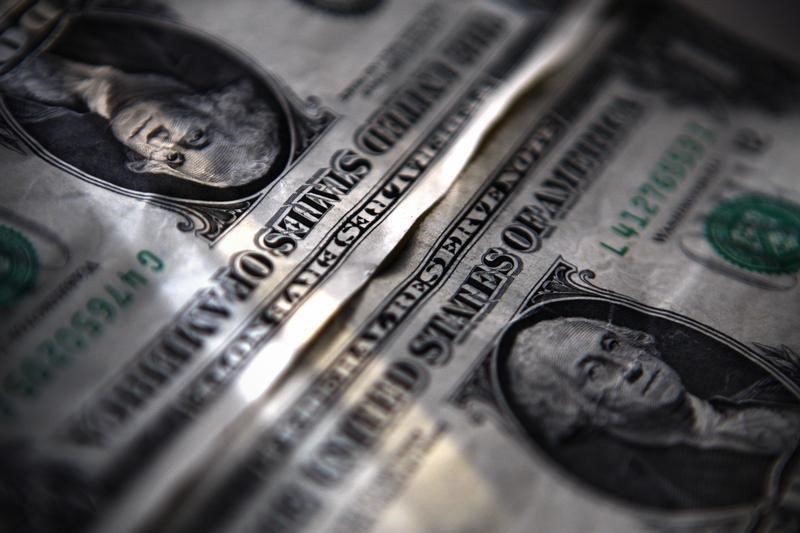Dollar down against major currencies The Washington Post
Post on: 30 Июнь, 2015 No Comment

By Neil Irwin August 8, 2011 Follow @Neil_Irwin
On global financial markets, the two most widely used currencies, the dollar and the euro, are locked in a contest of which is uglier. So far, it’s largely a draw.
Global investors are becoming antsy about the dollar’s role as the currency at the core of the world financial system, and concerned about the U.S. government’s dysfunction, and a weakening economic outlook. But they haven’t found anything better to replace it — and, if anything, view Europe’s financial problems as potentially deeper.
So the pattern on global currency markets is a strange one. The U.S. dollar is not, as a whole, rising in value the way it normally does when financial panic rages. Instead, it is losing value against a handful of currencies viewed as even safer havens, particularly the Japanese yen and Swiss franc, while remaining roughly flat in recent weeks against the euro and British pound.
That was on display in markets Monday. The euro fell 0.7 percent against the dollar, as investors concluded that a plan by the European Central Bank to try to prop up the Italian and Spanish bond markets could cause new financial weakness and expose the rest of Europe to losses.
But that decline left the euro well within its trading range of recent weeks. Meanwhile, the Swiss franc rose 1.6 percent against the dollar (and even more against the euro), reaching a new all-time high, and the Japanese yen rose sharply as well.
The shifts reflect global investors searching for safety. Finding few good options, they are sticking with the United States despite all the bad signs about the U.S. outlook, including a downgrade of the nation’s credit rating by Standard & Poor’s on Friday.
“The U.S. has a governmental crisis more than an economic crisis,” said George Feiger, chief executive of Contango Capital Advisers. “Europe has both. It has an economic crisis and a governmental crisis that are interconnected. We think the U.S. remains the least unsafe place to park money.”
But there are limits to that sentiment. In past global crises, money gushed into dollars, driving up the currency’s value. This time it’s more of a trickle, likely reflecting diminished confidence in the U.S. government, economic prospects and the Federal Reserve’s inclination to sustain its easy-money policy.
The dollar is roughly flat over the past month against a basket of six other major currencies, in contrast to its skyrocketing value the last two times financial crises flared, in late 2008 and the spring of 2010.
On Monday, as the Standard & Poor’s 500-stock index plummeted 6.7 percent. the dollar rose a modest 0.4 percent against the six other currencies. After a similar day of market declines in October 2008, the dollar index rose 2.3 percent.
“The euro has underperformed, and the dollar essentially has not done an awful lot,” said Alan Ruskin, a currency strategist at Deutsche Bank.
The historical role of the dollar as the global safe-haven currency is a mixed blessing for the United States. It has ensured that the U.S. government can continue borrowing money very cheaply in times of economic crisis. Even after S&P’s downgrade, the United States was able to borrow money for a decade for only 2.38 percent Monday, down 0.2 percentage points.
But the role of the nation as global reserve currency also comes at a cost; with the dollar more expensive than it would be absent that role, American exporters are less competitive in the global marketplace.
Indeed, both the Japanese and Swiss governments have taken steps over the past week to intervene in markets to stop the rapid rise of their currencies — with little apparent success so far — to combat the damage done to their economies by rising currency values.
For the better part of the past decade, the dollar has steadily lost value against other international currencies, reflecting both the rapid economic growth of many developing countries and a persistent U.S. pattern of spending more than it takes in.
That pattern was interrupted during the 2008 financial crisis, when the value of the dollar skyrocketed.
The dollar’s greatest rival as the most important currency is the euro, and the exchange rate between the two has vividly illustrated the pattern in recent years. Before the 2008 financial crisis worsened, the euro hit an all-time high of almost $1.60 to the dollar. It then sank to about $1.25 in the fall of 2008.
But the euro stabilized over 2009 as global economic prospects improved, before collapsing again in the spring of 2010, when the European debt crisis took hold.














